-
 Bitcoin
Bitcoin $120100
1.16% -
 Ethereum
Ethereum $4329
2.25% -
 XRP
XRP $3.192
-0.22% -
 Tether USDt
Tether USDt $1.000
-0.01% -
 BNB
BNB $805.2
0.47% -
 Solana
Solana $178.7
-1.85% -
 USDC
USDC $0.9998
0.00% -
 Dogecoin
Dogecoin $0.2305
-1.62% -
 TRON
TRON $0.3445
1.17% -
 Cardano
Cardano $0.7940
-1.28% -
 Hyperliquid
Hyperliquid $44.44
-1.20% -
 Chainlink
Chainlink $21.86
-2.42% -
 Stellar
Stellar $0.4423
-0.15% -
 Sui
Sui $3.728
-3.84% -
 Bitcoin Cash
Bitcoin Cash $584.8
2.19% -
 Hedera
Hedera $0.2524
-2.87% -
 Ethena USDe
Ethena USDe $1.001
-0.02% -
 Avalanche
Avalanche $23.66
-0.78% -
 Litecoin
Litecoin $124.5
0.39% -
 Toncoin
Toncoin $3.399
1.77% -
 UNUS SED LEO
UNUS SED LEO $9.002
-0.44% -
 Shiba Inu
Shiba Inu $0.00001327
-2.10% -
 Uniswap
Uniswap $11.42
2.58% -
 Polkadot
Polkadot $3.957
-2.50% -
 Cronos
Cronos $0.1696
4.50% -
 Dai
Dai $1.000
0.00% -
 Ethena
Ethena $0.8139
3.04% -
 Bitget Token
Bitget Token $4.442
-0.38% -
 Monero
Monero $271.2
2.93% -
 Pepe
Pepe $0.00001168
-2.91%
Does USDT support anonymous transactions?
USDT offers some privacy but isn't truly anonymous; KYC/AML regulations and blockchain traceability make complete anonymity impossible. Using privacy tools with USDT is risky and could lead to legal repercussions.
Mar 12, 2025 at 09:35 am
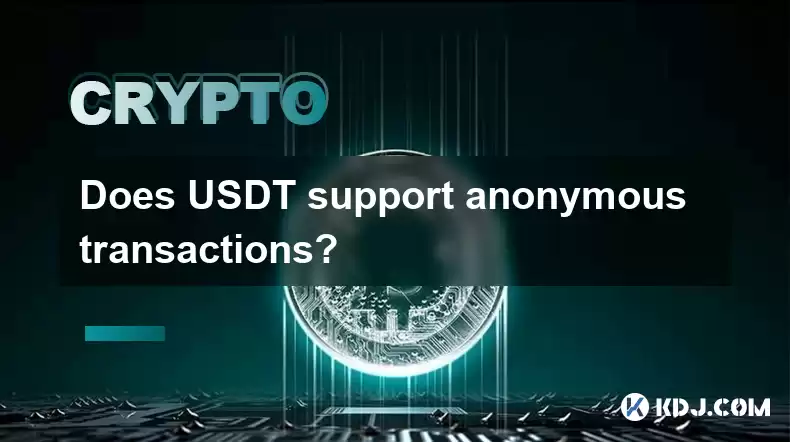
Key Points:
- USDT, while not inherently anonymous, offers a degree of privacy compared to traditional banking systems. However, it's crucial to understand the limitations.
- Tether's transparency initiatives aim to address concerns, but full anonymity is not a feature.
- KYC/AML regulations significantly impact the anonymity of USDT transactions.
- Using mixers or other privacy-enhancing tools with USDT carries substantial risks.
- Understanding the implications of using USDT for potentially illicit activities is paramount.
Does USDT Support Anonymous Transactions?
The short answer is no, USDT does not support truly anonymous transactions. While it might appear more private than using a bank account, the nature of blockchain technology and regulatory pressure means complete anonymity is impossible. Tether, the company behind USDT, is subject to Know Your Customer (KYC) and Anti-Money Laundering (AML) regulations, requiring them to verify the identities of users involved in significant transactions. This drastically reduces the anonymity possible.
The level of traceability depends on the exchange or platform used. Exchanges generally require KYC verification before allowing users to deposit or withdraw USDT. Even peer-to-peer (P2P) transactions, while seemingly more private, often involve intermediaries who might be subject to KYC regulations. This means that even seemingly "off-the-books" USDT transactions leave a trail.
While the underlying blockchain is public, it doesn't directly reveal the identities of users. Instead, it displays transaction hashes and wallet addresses. However, these addresses can be linked to individuals through various investigative techniques, particularly if the user has interacted with KYC-compliant exchanges.
Tether's efforts towards greater transparency, such as publishing periodic attestations of its reserves, aim to build trust and reduce the potential for misuse. However, these measures don't inherently enhance the anonymity of individual transactions. They focus more on assuring the stability and legitimacy of the USDT supply itself.
Attempting to obscure USDT transactions through mixers or other privacy-enhancing tools is a risky proposition. These tools, while potentially effective in masking transaction origins, are often associated with illicit activities. Using them could expose users to legal repercussions and even lead to the loss of funds.
The perceived anonymity of USDT often stems from the decentralized nature of cryptocurrencies. However, this decentralization is not synonymous with anonymity. The integration of cryptocurrencies into the global financial system necessitates regulatory compliance, which inevitably compromises complete privacy.
The use of USDT in potentially illicit activities carries significant legal risks. Law enforcement agencies are increasingly adept at tracing cryptocurrency transactions, even those involving privacy-enhancing tools. The perceived anonymity offered by USDT should never be interpreted as a license for illegal activities.
Understanding the limitations of USDT's privacy is crucial for responsible use. While it offers a degree of privacy compared to traditional banking, it's far from anonymous. Users should always be aware of the legal and regulatory implications of their transactions. The illusion of anonymity can be dangerously misleading.
The inherent traceability of USDT transactions, coupled with regulatory scrutiny, renders complete anonymity practically impossible. Attempts to circumvent these safeguards are often counterproductive and carry significant legal risks. Transparency, rather than anonymity, should be the guiding principle when using USDT.
Remember, even small details can link transactions back to users. Using multiple exchanges, engaging in unusual transaction patterns, or interacting with known illicit platforms all increase the likelihood of identification. The pursuit of anonymity through technological workarounds often carries far greater risks than simply operating within legal and regulatory frameworks.
Frequently Asked Questions:
Q: Can I use USDT to make completely untraceable payments?
A: No. While USDT transactions might not be as easily traceable as traditional bank transfers, they are not untraceable. Regulatory compliance and blockchain technology make it possible to link transactions to users, especially with KYC procedures.
Q: Are USDT transactions more private than bank transactions?
A: USDT transactions offer a degree of increased privacy compared to traditional banking, but this is not true anonymity. Bank transactions leave a very clear paper trail, while USDT transactions leave a trail on the blockchain, which can still be traced back to users depending on their interaction with KYC compliant platforms.
Q: What happens if I use USDT for illegal activities?
A: Using USDT for illegal activities carries significant legal risks. Law enforcement agencies are capable of tracing cryptocurrency transactions, and engaging in such activities could lead to prosecution and asset seizure.
Q: Can I use privacy tools with USDT to enhance anonymity?
A: While privacy tools exist, their use with USDT carries substantial risks. These tools are often associated with illicit activities, and using them could expose users to legal repercussions and loss of funds. Furthermore, they do not guarantee complete anonymity.
Q: Does Tether actively work to maintain user anonymity?
A: Tether's focus is not on maintaining user anonymity, but on maintaining the stability and legitimacy of the USDT supply. Their transparency initiatives aim to build trust, not to enhance the privacy of individual transactions. In fact, Tether actively complies with KYC/AML regulations, hindering any potential anonymity.
Disclaimer:info@kdj.com
The information provided is not trading advice. kdj.com does not assume any responsibility for any investments made based on the information provided in this article. Cryptocurrencies are highly volatile and it is highly recommended that you invest with caution after thorough research!
If you believe that the content used on this website infringes your copyright, please contact us immediately (info@kdj.com) and we will delete it promptly.
- Bitcoin, Solana, MAGACOIN FINANCE: Navigating the 2025 Crypto Landscape
- 2025-08-12 00:30:13
- Cardano, ADA Holders, and Layer Brett: A Meme Coin with Real Utility?
- 2025-08-12 00:50:12
- Bitcoin, Michael Saylor, and Savvy Investors: A New Era of Digital Assets
- 2025-08-12 00:30:13
- Crypto Presales in 2025: Spotting the Next Big Thing with Analyst Insights
- 2025-08-12 00:50:12
- Cloud Mining in 2025: Bitcoin, Litecoin, and the Quest for Passive Income
- 2025-08-12 00:55:32
- Token Security, Agentic AI, Cybersecurity Guide: Navigating the New Frontier
- 2025-08-11 23:00:12
Related knowledge
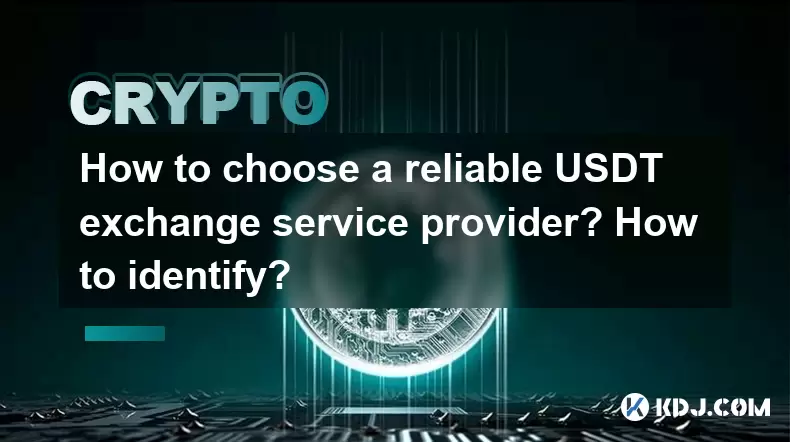
How to choose a reliable USDT exchange service provider? How to identify?
Jun 12,2025 at 03:15pm
Understanding the Role of USDT in Cryptocurrency TradingUSDT (Tether) is one of the most widely used stablecoins in the cryptocurrency market. It is d...
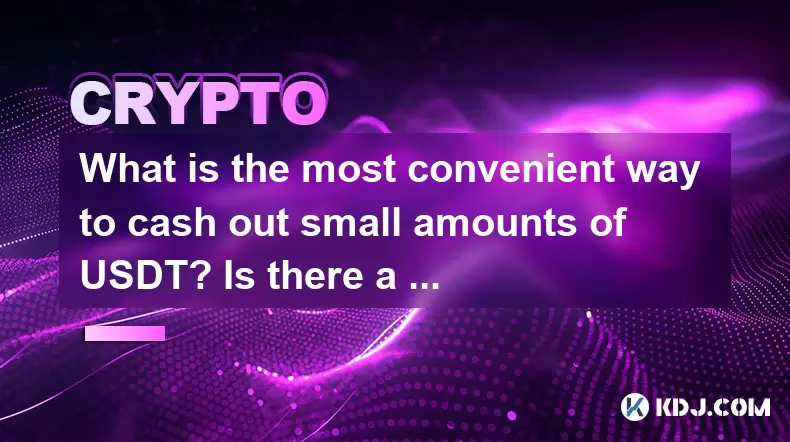
What is the most convenient way to cash out small amounts of USDT? Is there a shortcut?
Jun 11,2025 at 11:00pm
Understanding the Need to Cash Out Small USDT AmountsCashing out small amounts of USDT can be a challenge for many crypto users. Traditional methods o...
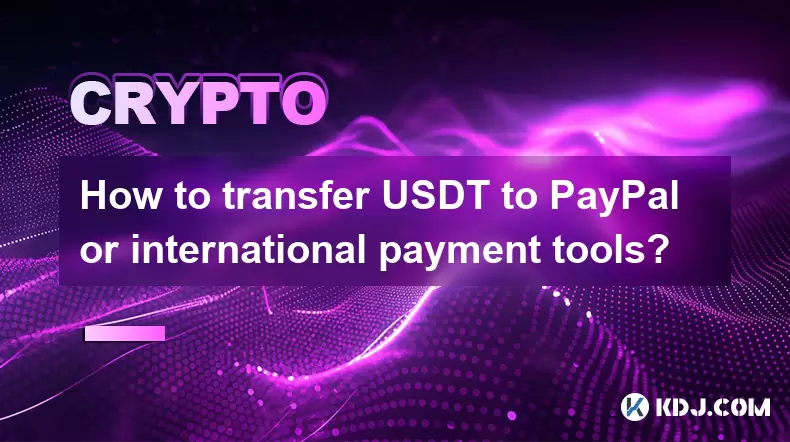
How to transfer USDT to PayPal or international payment tools?
Jun 15,2025 at 05:28am
Understanding the Basics of USDT and PayPal IntegrationUSDT (Tether) is a stablecoin pegged to the US dollar, offering blockchain-based value transfer...
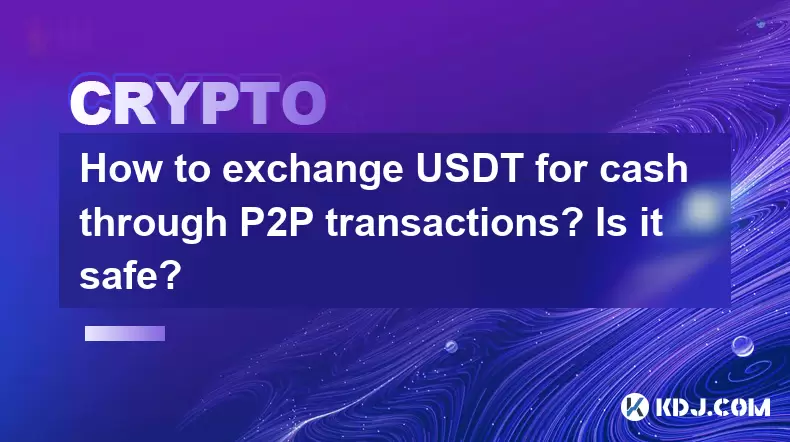
How to exchange USDT for cash through P2P transactions? Is it safe?
Jun 18,2025 at 07:56am
Understanding USDT and P2P TransactionsTether (USDT) is a stablecoin pegged to the value of the US dollar, making it a popular choice for users who wa...
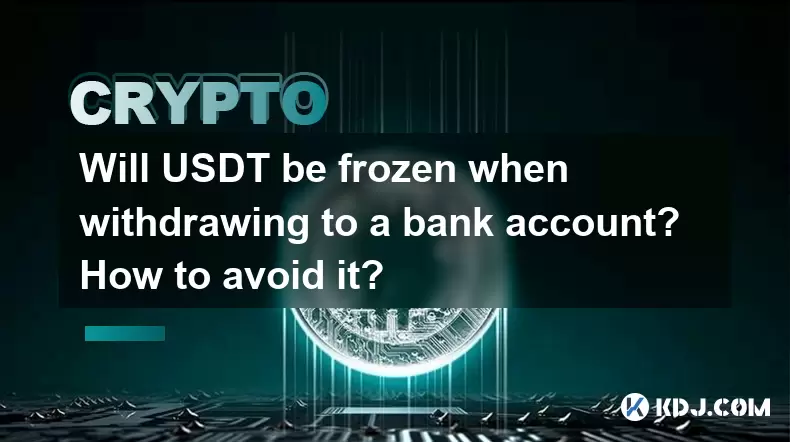
Will USDT be frozen when withdrawing to a bank account? How to avoid it?
Jun 15,2025 at 10:03am
Understanding USDT Withdrawals and Bank Account Freezing RisksWhen users decide to withdraw USDT (Tether) to a bank account, one of the most common co...
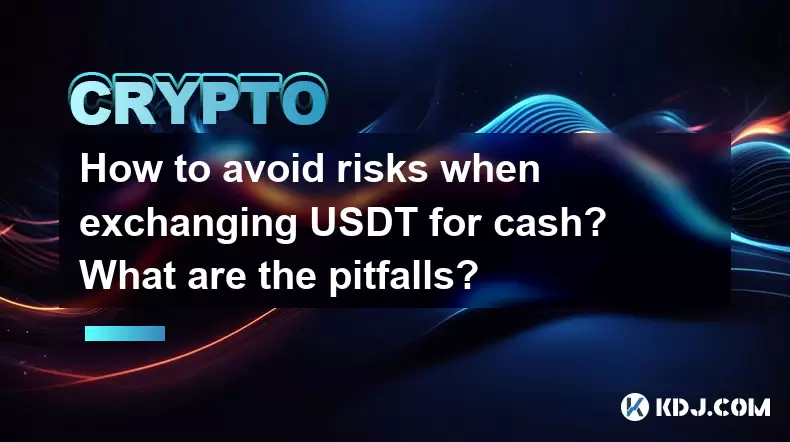
How to avoid risks when exchanging USDT for cash? What are the pitfalls?
Jun 11,2025 at 08:14pm
Understanding the Risks of Exchanging USDT for CashWhen exchanging USDT (Tether) for cash, users must be aware of the potential risks involved. As a s...

How to choose a reliable USDT exchange service provider? How to identify?
Jun 12,2025 at 03:15pm
Understanding the Role of USDT in Cryptocurrency TradingUSDT (Tether) is one of the most widely used stablecoins in the cryptocurrency market. It is d...

What is the most convenient way to cash out small amounts of USDT? Is there a shortcut?
Jun 11,2025 at 11:00pm
Understanding the Need to Cash Out Small USDT AmountsCashing out small amounts of USDT can be a challenge for many crypto users. Traditional methods o...

How to transfer USDT to PayPal or international payment tools?
Jun 15,2025 at 05:28am
Understanding the Basics of USDT and PayPal IntegrationUSDT (Tether) is a stablecoin pegged to the US dollar, offering blockchain-based value transfer...

How to exchange USDT for cash through P2P transactions? Is it safe?
Jun 18,2025 at 07:56am
Understanding USDT and P2P TransactionsTether (USDT) is a stablecoin pegged to the value of the US dollar, making it a popular choice for users who wa...

Will USDT be frozen when withdrawing to a bank account? How to avoid it?
Jun 15,2025 at 10:03am
Understanding USDT Withdrawals and Bank Account Freezing RisksWhen users decide to withdraw USDT (Tether) to a bank account, one of the most common co...

How to avoid risks when exchanging USDT for cash? What are the pitfalls?
Jun 11,2025 at 08:14pm
Understanding the Risks of Exchanging USDT for CashWhen exchanging USDT (Tether) for cash, users must be aware of the potential risks involved. As a s...
See all articles

























































































